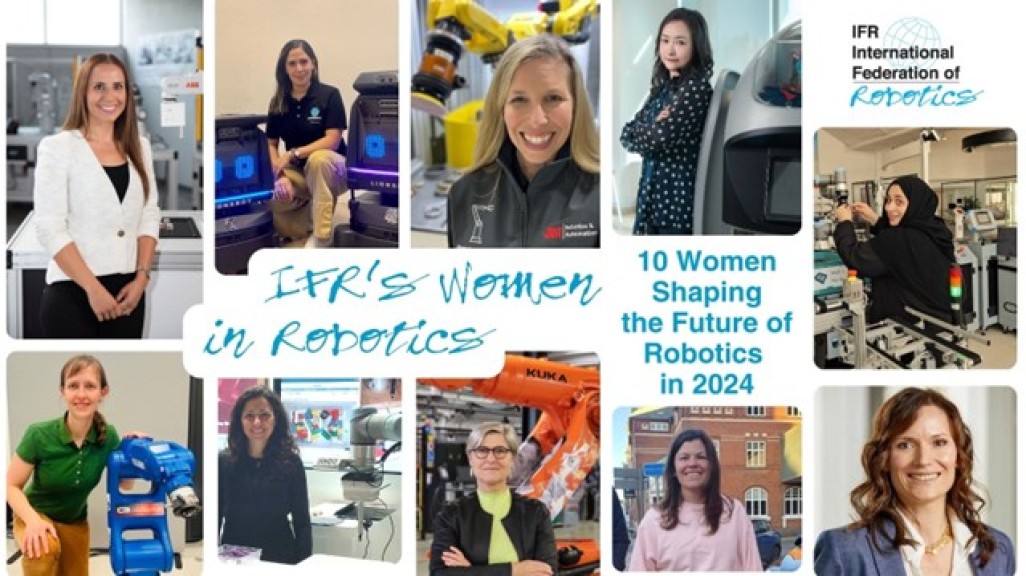World Bank Predicts 20% Economic Boost by Closing Gender Gap

Frankfurt, Jun 05, 2024 — Labor shortages hamper future economic growth worldwide. World Bank predicts that GDP per capita would be almost 20 percent higher on average if female employment were increased to be the same as men´s. The International Federation of Robotics (IFR) and its members support the empowerment of women for careers in the robotics industry.
“Robotics is a fascinating field and my clear message is that there is a great future for women in this industry,” says Marina Bill, President of the International Federation of Robotics. “Every year, the robotics ecosystem grows more and we want to set a benchmark in terms of gender equality.”
Women at work by branch
On average, women are broadly underrepresented in the workplace. Yet, the talent pipeline varies by industry: food and beverage manufacturing in North America, for example, has a 54% female labor force participation at entry level. 42% work in a senior management role but only 15% reach the C-Suite. The broader industrial manufacturing sector in the US and Canada lags much further behind: only 33% attract entry-level women. The potential to empower women and fight labor shortage is currently not exploited by any of the 20 industry sectors surveyed by McKinsey´s study “Women in the Workplace”.
Above senior management level, even the most progressive industries do not reach gender equality. There are only about 30% C-Level women in healthcare systems and services, for example. This is remarkable since this sector is in the lead with female participation at manager (70%) and entry level (76%).
Robotics supports women´s careers
Robot manufacturers like ABB, FANUC, KUKA, and YASKAWA all run programs to close the work-related gender gaps. They reach out to candidates at a young age at school to get them interested in new technologies related to robotics and STEM professions. These programs often work hand-in-hand with government initiatives, academia and network projects on a local level. At the same time, robotics training plays a key role to promote female labor force participation. The training programs range from basic programming for the first-time user to complex workshops. International robot manufacturers offer robot classes with a special focus on gender equality across more than 30 countries.
IFR´s award Women in Robotics
“All around the world, there are inspiring women who work in our industry and set an example of gender equality,” says Marina Bill, President of the International Federation of Robotics. “We aim to give them more visibility and acknowledgment: From 2024, we will select and officially award IFR's ‘Women in Robotics: 10 Women Shaping the Future of Robotics’.”
Among IFR´s selection criteria will be contributions to and achievements in the overall field of robotics, further promoting the industry, as well as activities encouraging young women to pursue a career in STEM subjects or robotics.

